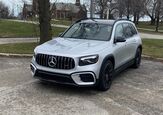Japan In August 2010: Up 46.7 Percent, And This Is The End

Japanese citizens raced to showrooms in August and bought cars as if they are going out of style. Domestic sales of new cars, trucks and buses increased 46.7 percent from the same month in the year prior. There is a reason to this: Cars will be going out of style in Japan any moment now …
Currently, demand is being propped up by government incentives for “fuel efficient cars” – which is pretty much anything that is street-legal in Japan. This program will officially end on October 1. However, rumors are making the rounds that the Japanese government may stop taking applications earlier. In any case, October will definitely be the end of rising car sales in Japan. If you’ve ever seen a pull-forward effect, then this is it. Anybody who’s remotely thinking of buying a car in Japan is buying now and not after the end of the month. ( There will be a few additional months for diesels and electric vehicles.)
Japanese sales have risen the 13th straight month, according to Japan Automobile Dealers Association data published by The Nikkei [sub]. 290,789 vehicles changed hands in August, up from 198,265 vehicles in the same month in the previous year. This number excludes minivehicles.
CNBC has minivehicles rising by 21.7 percent to 134,197 units. This works out as a total of 424,986 units sold, up 37.7 percent.
Shares of major Japanese automakers had a mixed reaction to the glad tidings.
The Honda share crept up a bit, buoyed by the news that Honda’s domestic sales were up 61.3 percent in August, outperforming the market.
The Toyota share continued its fall, pulled down by worries about a still strengthening Yen and the end of the government subsidies, along with the fact that Toyota sales (+43.1 percent) slightly underperformed the market.
Domestic Automobile Sales Japan August 2010
UnitsChangeToyota Motor13247143.1%Nissan Motor 4485744.6%Honda Motor 5019561.3%Mazda Motor 2164159.8%Mitsubishi Motors 664547.0%Suzuki Motor 44444.0%Fuji Heavy 620970.6%Imports1971674.9%Excluding minivehicles. Data by Reuters
Bertel Schmitt comes back to journalism after taking a 35 year break in advertising and marketing. He ran and owned advertising agencies in Duesseldorf, Germany, and New York City. Volkswagen A.G. was Bertel's most important corporate account. Schmitt's advertising and marketing career touched many corners of the industry with a special focus on automotive products and services. Since 2004, he lives in Japan and China with his wife <a href="http://www.tomokoandbertel.com"> Tomoko </a>. Bertel Schmitt is a founding board member of the <a href="http://www.offshoresuperseries.com"> Offshore Super Series </a>, an American offshore powerboat racing organization. He is co-owner of the racing team Typhoon.
More by Bertel Schmitt
Latest Car Reviews
Read moreLatest Product Reviews
Read moreRecent Comments
- CanadaCraig My 2006 300C SRT8 weighs 4,100 lbs. The all-new 2024 Dodge Charge EV weighs 5,800 lbs. Would it not be fair to assume that in an accident the vehicles these new Chargers hit will suffer more damage? And perhaps kill more people?
- Akila Hello Everyone, I found your blog very informative. If you want to know more about [url=
- Michael Gallagher I agree to a certain extent but I go back to the car SUV transition. People began to buy SUVs because they were supposedly safer because of their larger size when pitted against a regular car. As more SUVs crowded the road that safety advantage began to dwindle as it became more likely to hit an equally sized SUV. Now there is no safety advantage at all.
- Probert The new EV9 is even bigger - a true monument of a personal transportation device. Not my thing, but credit where credit is due - impressive. The interior is bigger than my house and much nicer with 2 rows of lounge seats and 3rd for the plebes. 0-60 in 4.5 seconds, around 300miles of range, and an e-mpg of 80 (90 for the 2wd). What a world.
- Ajla "Like showroom" is a lame description but he seems negotiable on the price and at least from what the two pictures show I've dealt with worse. But, I'm not interested in something with the Devil's configuration.

































Comments
Join the conversation
Honda has a much great proportion of its production base outside Japan than Toyota does, hence investors view Honda as not being as sensitive to a rising yen as Toyota is. As an aside, why isn't Honda the second row in that table?
I don't get why 'minivehicles' (kei cars?) are excluded...they're fuel efficient, right?